We all know that our listeners are smart Amazon sellers purely based on the fact that you want to learn and grow! However, even the best sellers make mistakes sometimes. Today on The Full-Time FBA Show, we are listing 10 mistakes that even smart Amazon sellers make.
These mistakes are broken down into two categories; sourcing mistakes and mistakes in running your Amazon business. Listening today, you’ll hear about mistakes such as not checking current stock levels, only sourcing within your comfort zones, ignoring customer service, ignoring negative feedback, and not following up on reimbursements you are owed by Amazon. We also tell you how to avoid some of these mistakes and provide you with tools to help with better selling practices. Join us today!
Listen on the podcast player below.
Like what you hear? Tell a friend… and be sure to leave us a rating and a review. Here’s how.
Key points from Episode 143:
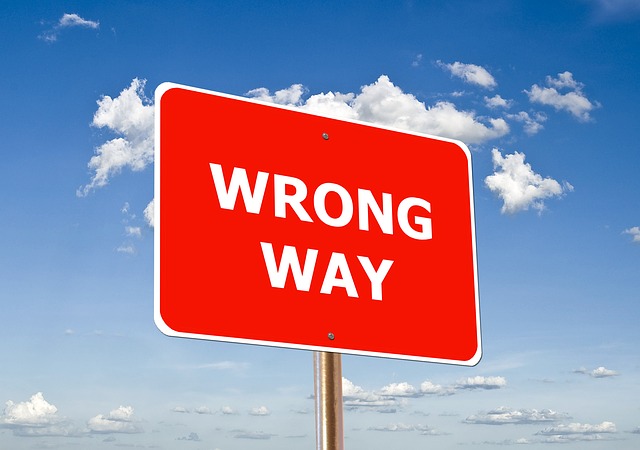 Sourcing mistakes you can make.
Sourcing mistakes you can make.
- One: forgetting to check if you’re approved to sell an item before sourcing it.
- Two: not properly matching the item you’re selling with the Amazon product page.
- Three: forgetting to check the sales rank and pricing history of an item before sourcing it.
- Four: not checking the current stock levels of items on Amazon.
- Five: not sourcing at stores outside your comfort levels.
 Mistakes you can make when it comes to how you run your business.
Mistakes you can make when it comes to how you run your business.
- Six: ignoring customer service.
- Seven: ignoring your excess inventory.
- Eight: ignoring the Voice of the Customer (the actual Amazon Seller Central page.)
- Nine: ignoring negative feedback.
- Ten: ignoring Amazon reimbursements that you’re owed.
Links and resources mentioned in this episode:
 Keepa – Amazon sales rank and price tracker
Keepa – Amazon sales rank and price tracker- How to Read and Understand a Keepa Graph
- Scoutify – Retail arbitrage sourcing app
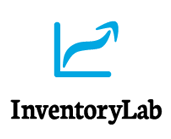 InventoryLab – The complete inventory management tool for Amazon sellers
InventoryLab – The complete inventory management tool for Amazon sellers- Amazon Ads 101 course
- Use coupon code FULLTIME20 to take $20 off the above course
- Solutions 4 Ecommerce – Amazon backend services
- Use the code FULLTIMEFBA for 15% off your monthly fee (for life)
- Amazon Feedback Removal Guidelines
- Feedback Genius from Seller Labs
- How to Keepa a Perfect Feedback Score
Right-click here and save as to download this episode to your computer.
![]()
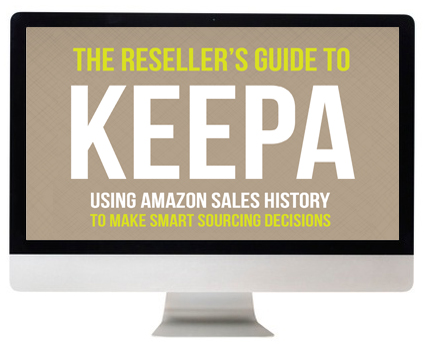 The Reseller’s Guide to Keepa
The Reseller’s Guide to Keepa
Have you heard about Keepa? It’s a tool (with both a free and a paid plan) that can dramatically lower the risk of sourcing inventory items that end up tanking in price. I’m sure you know how it feels to buy an item expecting it to sell for a high price only to see the price tank soon after you send it to Amazon. With using Keepa the right way, you can protect yourself from that happening!
Basically, Keepa tracks the vital data on almost every item on Amazon. It can quickly show me the sales rank history, pricing history, buy box price history, used item history, Amazon in stock history, competitors’ stock levels, and so much more. With Keepa, I can easily look at the data from the past and better know what to expect in the future when it comes to price and sales velocity.
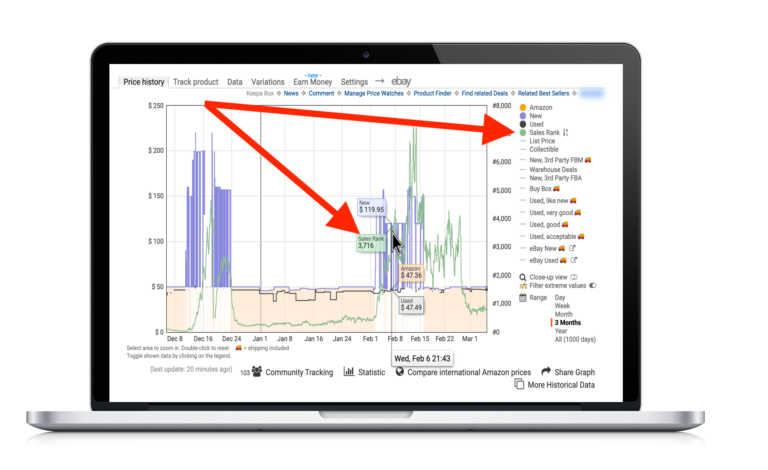 To find out everything there is to know about using Keepa to make smart sourcing decisions, be sure to check out our course, The Reseller’s Guide to Keepa: Using Amazon Sales History to Make Smart Sourcing Decisions.
To find out everything there is to know about using Keepa to make smart sourcing decisions, be sure to check out our course, The Reseller’s Guide to Keepa: Using Amazon Sales History to Make Smart Sourcing Decisions.
With this course, you’ll make more confident sourcing decisions, better pricing decisions, and you’ll grow your Amazon business to the next level by selling your inventory faster and at higher prices!
![]()
Back to the main page for The Full-Time FBA Show
More Episodes from the Full-Time FBA Show podcast:
Don’t miss an upcoming episode! Subscribe, download episodes, and review the Full-Time FBA Show:
-
-
- Subscribe on iTunes
- Follow on Spotify
- Follow on Amazon Music (or just ask Alexa to “play The Full-Time FBA Show podcast”)
- Follow on iHeartRadio
- Subscribe on Podbean
- Subscribe on Podbay
- Subscribe on Podchaser
-
![]()
Episode 143 Transcript:

[INTRODUCTION]
[0:00:01.8] ANNOUNCER: Welcome to The Full-Time FBA Show. In each episode, it’s our goal to help you turn part-time hours into a full-time income, selling almost anything on Amazon. Now, your hosts of the show, Stephen and Rebecca Smotherman.
[WELCOME]
[0:00:21.5] REBECCA: Hello there and welcome to another episode of The Full-Time FBA Show. Today, we’re on episode number 143 and we’re going to be talking about the 10 mistakes that even smart Amazon sellers make and I know you, you are a smart Amazon seller. So make sure that you are listening in and possibly even taking some notes to go back and look at your business to see if you are making any of these mistakes.
Today here with me to talk about this is my cohost, as always, Stephen Smotherman. How are you doing, Stephen?
[0:00:51.2] STEPHEN: I am good. I totally agree with you that our listeners are smart Amazon sellers and the way we know that is because you’re listening to this podcast. You’re wanting and desiring to learn, you want too avoid other people’s mistakes, you want to learn ideas on how to grow your Amazon FBA business and the more you learn, the more you learn, the more you can earn and so, you’re definitely smart and we want to help you avoid these seller mistakes.
[0:01:12.5] REBECCA: That’s right, let us make the mistakes for you.
[0:01:14.6] STEPHEN: Yes because we’ve certainly done that in the last 10 years and we’re going to pass on our knowledge that we’ve learned from our mistakes in today’s episode.
[DISCUSSION]
[0:01:25.1] REBECCA: All right, so, let’s get right into it. We’ve got 10 mistakes that we wanted to share with you today and make sure that you are not making these mistakes in your Amazon business and these are in no particular order, they’re kind of grouped by topic but not any particular order like this one’s worse than the other one. I don’t know, maybe they’re alphabetical? Maybe not.
[0:01:46.4] STEPHEN: What?
[0:01:47.4] REBECCA: I don’t know. No, they’re grouped according to topic. So anyway Stephen, let’s start off first talking about some sourcing mistakes.
[0:01:55.2] STEPHEN: So we all make sourcing mistakes and you know what? I just want to remind everybody, mistakes are okay, that’s how we learn but we definitely want to learn from other people’s mistakes so we don’t have to do this. So the first sourcing mistake we’re going to talk about today is that we forget to make sure we’re even approved to sell an item before sourcing it. I still do this today.
I just see the profitability and I look at the Keepa graph and I’m like, “Oh, this is awesome, it’s got a good sales rank, good profitability, boom, I’m buying it” and I forget to look and make sure I am approved to sell this. Even though I’ve got really good tools to help me avoid this mistake. Like Scoutify, when I’m doing retail arbitrage has a little button. It shows me when I’m restricted for a particular item. It notifies me right there and sometimes, I don’t even look at it.
So make sure that you know before you purchase an item, whether you’re approved. If you’re doing online arbitrage, the tool Rev Seller has a quick little link for you to see if you are approved or not and guess what? If you’re doing wholesale sourcing, you have a relationship with the wholesaler, even if you’re not approved now, you can get some documents from that brand that you’re buying wholesale from and get approved. So you don’t even have to worry about that.
So just make sure you’re approved, you don’t want to come home and not be able to sell it on Amazon. Of course, if that happens, you can either try to sell them on another platform but we want sell our stuff on Amazon, right? I mean, we can get the most money selling our stuff on Amazon. So avoid that mistake, make sure you’re approved.
[0:03:17.7] REBECCA: The second mistake that we want to talk about today is not properly matching the item that you’re selling that you’ve purchased with the Amazon page, the product page and you need to make sure that it’s a hundred percent match, the pictures, the description, UPC, all of that.
Stephen confessed that sometimes, he makes purchases for items that he’s not approved for. I will confess that this is one that I still do. I still, from time to time will be kind of in a rush. I mean honestly, that’s what this one comes down to is that I’m rushing when I’m sourcing and I think, “Oh yeah, this one is a match.”
I found a match and then, when I come back later to list it and I start going through and getting it listed, I realized, “Oh actually, this is not the same item.” There’s something a little bit off, the picture doesn’t match or the product page, the title is for a different amount or something along those lines and I realize, I can’t list this item that I have sourced on this product page.
That can be a costly mistake because either you end up finding out this item’s not actually on Amazon, if I wanted to sell it, I would have to create a product page or when I find the correct product page, there’s some reason why it’s not profitable or I’m not approved or some other reason why I can’t sell it.
That can be a really costly mistake and again, that mostly comes down to rushing and not using the tools that are available for me to go through all of that checklist to make sure that it does 100 percent match before I source it and this is a mistake that I think that I make more often than Stephen because I’m doing more OA.
He does RA and it’s easier when you’ve got the product in your hand to look at it and make sure that you’ve got the same item that you’re sourcing and let’s listed on the catalog and then OA is sometimes it can be kind of tricky and you could end up once the item arrives either at your place of business or your prep center to find out something went wrong with the OA software that you were using, it didn’t give you all the information or you skipped a step somewhere and you know, you didn’t find out until you actually had the item shipped to you.
So just be sure to do your due diligence, take all of the steps you need to take to go down your little checklist of what it needs to match before you source that item.
[0:05:33.0] STEPHEN: Then another mistake that that kind of goes along with that, which is not even on our list so it’s a bonus mistake, no extra charge for the bonus mistake, there are some people who order stuff online arbitrage get it to their place and while they’re listing it, realize they made the mistake and just say, “You know what? I’m going to sell it anyway, it’s got the same UPC, I’m going to send it to Amazon anyway.” That’s another mistake that could cause negative feedback, a return and just sometimes you just have to eat your mistakes when you make them and take a loss if that’s what happens.
So, a third mistake that smart Amazon sellers make and this is the one I used to make but I almost never make this mistake anymore, I’m kidding, I do from time to time, we forget to check the sales rank and pricing history of an item before sourcing it. The biggest mistake an Amazon seller can make is to just look at today’s sales rank and today’s pricing and just assume that’s what’s going to happen in the future.
There’s a tool called Keepa and I talk about it all the time, it tracks the history of the sales rank and the pricing history, the buy box price history, the buy box price history, all sorts of information and you can just with a click of a button, check a Keepa graph and look at to see into the past so you can better predict the future and sometimes, I just don’t look at that.
I would say it’s probably like maybe 0.1 percent of the time it happens sometimes but it turns out sometimes that 0.1 percent of the time ends up biting me in the back and I end up making a mistake and it’s not profitable but just take a little bit of extra time.
A few extra seconds, look at the sales rank history and the pricing history before buying it to sell on Amazon, you can use Scoutify and add a quick link to Keepa graph on your Scoutify link options and very quickly, you’ll know for sure if the item that you’re buying is going to keep that price consistently and have the same sales will last as you’d expected to.
[0:07:17.2] REBECCA: So, so far the common denominator in all of these is, you have the tools available not to make these mistakes but we sometimes just get in a hurry and don’t go through all of the steps to check all of the data before we make the purchase.
[0:07:29.9] STEPHEN: Yes, and it’s funny how the whole hurrying aspect is a common denominator because we know what to do, sometimes we just skip actually doing it because of time.
[0:07:40.1] REBECCA: Yeah and I think that when we’re talking about, these are mistakes that smart Amazon sellers make, sometimes we get to where we’re like, “Oh, I’m so experienced at this now, it shouldn’t take me that long to make a decision” and we end up forgetting a step or skipping over something or not giving it the due diligence that it deserves.
[0:07:56.7] STEPHEN: Yes, pride comes before the fall and that is true with this as well.
[0:08:01.2] REBECCA: Yes. Okay, so the fourth mistake we’re talking about today is, we forget to or just don’t check the current stock levels of items on Amazon when we’re sourcing RA or OA or even when we’re ordering wholesale items. We just don’t even check to see what other sellers have in stock already before we make our own purchase.
This is an easy thing to check to see, are there sellers who already have 999 plus of an item in stock that we would be competing with for the buy box on this item before we buy that item? That is information that you can check easily on Keepa, whether you’re doing retail arbitrage or you’re doing online arbitrage or wholesale sourcing. You can check other seller’s stock levels.
Another thing you want to do, and this seems kind of obvious but this is a mistake that it can be pretty easy to make sometimes. Is that you don’t check your own stock levels before you make a purchase. If you are replenishing an item or you are out and about and you see something and you’re like, “Oh, I’ve purchased that before and I know it was selling well, I should go ahead and buy some more.”
But you don’t check again on the product page to see what’s going on with the data more recently. If you don’t check to see how many do you actually have in stock right now, you could end up getting excess inventory in your inventory because you just skip the step to see, “Do I actually still have this item in stock already?”
This is something, if you’re outsourcing RA, you can check on Scoutify to see what your stock levels are. If you’re doing OA or wholesale, you can either check Inventory Lab or just go to seller central and check your inventory to make sure how many units you have of that item in stock before you make another purchase.
[0:09:43.8] STEPHEN: So the fifth mistake when it comes to sourcing is that we don’t source at stores outside our comfort zones. Sometimes we like our stores that we source at, you know, we have the stores that we’ve had success in the past and we kind of stick with it and sometimes, we can even feel married to a certain store because you know, we stick with it through thick and thin and sometimes it just wants you to know, it’s okay to go to other stores to kind of get some fresh places, fresh sources to get inventory and to get outside your comfort zone.
[0:10:13.1] REBECCA: You’re not cheating on those other stores if you do that.
[0:10:15.9] STEPHEN: That’s true, yes. They’ve not committed to you, you don’t need to commit to them and so you know, you can kind of get out of your comfort zone because that’s where the magic happens outside of your comfort zone. You can find some new inventory, some new places that are profitable for you to source for inventory and you know, just get out of your comfort zone and find more inventory.
[0:10:33.5] REBECCA: So that wraps up the sourcing mistake section of this episode. Though, all of those mistakes kind of group under the category of sourcing and now, we want to look at mistakes that are more associated with how you run your Amazon business and how you take care of just the business day to day aspects that aren’t necessarily related to purchasing when it comes to running your business. So let’s get into that next.
[0:10:55.9] STEPHEN: So the next mistake is ignoring customer service. For the most part, Amazon takes care of customer service but when you get a direct message from a potential buyer or maybe someone who has been a customer of yours and has follow-up questions about ordering or a problem with their order, it is highly important for you to not to ignore those but to provide good customer service for your customers or potential future customers.
You know, if you have any Amazon seller app on your phone, then you can actually get notifications pushed to you when a customer sends a message and you can reply right the on the Amazon seller app. The goal for Amazon is for you to reply in under 24 hours. My goal is within one hour. I want to reply as soon as possible so I do have the push notification on my phone. I get notified when a customer asks me a question or has a problem with an order and I help them as soon as possible right then and there.
Yes, there is an option to click, “no response needed.” The only time I ever use that is if we’ve gone back and forth with multiple messages and they say thank you, I don’t need to be the last one to have the last word. I am not going to be like, you’re welcome. You know, I’ll just let it go and have no response needed but there are some Amazon sellers who abuse that button, “no response needed.”
You need to make sure you respond well to your customer and have good customer service metrics because Amazon tracks it. They track how long you take to reply and it factors into your overall customer service metrics.
[0:12:21.4] REBECCA: The seventh mistake that we’re going to talk about is ignoring your excess inventory. In the inventory dashboard in seller central, Amazon will tell you what they consider to be your excess inventory. They will tell you how many ASINs and how many units all together they are considering to be excess. There is a lot of data that you can see on that tab on the dashboard with excess inventory to see how long that inventory has been there, how much money you’re spending on storage fees.
Things like that, how many you sold in the last I think it’s 90 days, 30 days to see kind of what do you need to do to deal with that excess inventory and this is something that we check on a regular basis in our dashboard. I will admit that in the in past, particularly once like in the early days of when the IPI rolled out in this excess inventory was a thing that they were pointing us towards.
I didn’t look at it as regularly or I didn’t take it as seriously because I wasn’t really sure how important it was but now, we have a very clear understanding that excess inventory – because it’s at the top of the page on that dashboard, Amazon wants you to pay attention to it. That is why they put it on the top of that page. They really want you to pay attention to your excess inventory and also, there were times when I thought, I don’t really consider that excess.
I have planned it out, I know that these items are going to sell in a certain timeframe but Amazon’s algorithm is saying otherwise and so you just have to figure out what is Amazon wanting you to do to tweak this. Sometimes all that it requires, there have been items that we’ve had, you know, it says there’s 50 of them in excess and I’m like, “I know that those 50 items are going to sell.”
I will go in and price it a little bit lower to get the buy box more often and sell maybe five or six of the item and that will take it out of excess. All the algorithm wanted to know was that you are selling some of them now and then I will change my price back to where I wanted it so that I can sell them in the timeframe that I was wanting but if I don’t do that and don’t get those moved out of excess for the time period, it will cause our IPI to go down.
That’s the inventory performance index and that can really affect your storage limits over the long term if you are not careful and so always make sure that you are checking with the recommendations are that Amazon has for you there. Sometimes they’re wanting you to price it down, sometimes they are wanting you to just remove that inventory. They’ll tell you on that page too what they recommend.
Make sure that you have your repricer set up with a liquidation setting whenever possible. You might want to consider setting up some advertising on items. That is another thing that we have done to fix that mistake of ignoring that excess inventory just set up some advertising and get some of those items moving a little bit faster. If you want to learn more about how to set up your advertising in your inventory, go to fulltimefba.com/amazonads and that will take you to a link for a course by Jo Ann Zimmerman that has really great help for how to get started with Amazon ads.
[0:15:16.2] STEPHEN: It’s a really great course too.
[0:15:17.4] REBECCA: Yes.
[0:15:18.0] STEPHEN: So the eighth Amazon mistake that even smart Amazon sellers make is ignoring the voice of the customer and this is different from the customer aspect of seeing on Amazon that I was talking about a minute ago about direct messages from customers. The voice of the customer is an actual page on Amazon. You can find it by going to seller central, hovering over the performance tab and clicking on the voice of the customer link and it tells you of all of your listings on Amazon.
Which one are on good standing, which one are in poor standing, which ones are in very good standing, which ones are in very bad standing and you can actually look at and it’s in really bright red, the worst right at the very top of the items that you are selling that have had multiple complaints from Amazon customers. Now, we know sometimes these complaints are like not really real complains.
They are complains about FBA or the shipping process or something like that but if you look at your Amazon voice of customer page, you can kind of see there are certain items that are always breaking or always getting returned or there are certain items that the sales page is very misleading and needs to be updated and you kind of go and try to make the changes or just decide to stop selling that item overall.
I mean, there was a particular item that I used to sell and no matter how well we package the item, bubble wrapped it and stuff, we got a ton of returns and a ton of complaints that it was breaking or like you know what? We’re not just going to sell this item anymore. It’s not profitable for us, all these breaking items even though it is not our fault and it’s Amazon’s fault, it is not profitable for us to do this anymore, so we decided to let go.
But it was because we were paying attention to the voice of the customer for us to realize that this was going on. So if you are ignoring the voice of the customer, that is a huge mistake as an Amazon seller.
[0:17:01.7] REBECCA: Number nine is ignoring negative feedback. This is something that you really want to pay attention to on a regular basis because it can really impact your ability to get the buy box and get lots of good sales. You don’t want to have negative feedback on your seller account. You always want to be checking to make sure that if you are getting negative feedback, that you are doing everything you can to address it.
One of the things you can do just right off the bat is to see that negative feedback violates Amazon’s feedback policy. They do have rules about the type of feedback that buyers can leave for sellers. So if it violates the feedback policy, you can try to get Amazon to remove that feedback and even if it doesn’t, see if Amazon will remove it anyway. There are ways to contact Amazon and see about getting that removed.
You can go to seller central, look under performance and feedback and ask Amazon to remove that feedback. For instance if the feedback has anything to do with the service that is provided by the fulfillment by Amazon, people rather than you, see if Amazon will remove it because that wasn’t your fault, that was the FBA worker’s fault.
[0:18:06.5] STEPHEN: Or they might not remove it but strike through it and take credit for it so the feedback remains but it doesn’t ding your account.
[0:18:12.2] REBECCA: Yeah and finally, you could reach out to the customer. You want to make sure that you are 100 percent above board in following Amazon’s policy when you are doing this but ask if there is anything that you can do to make things right for the customer. Do not offer them anything in return for a positive review but ask if there is anything that you can do to make things right for them and then later on, you can ask them if they would reconsider their feedback but don’t offer anything in exchange for that.
If you want to find out more information about how to do this all correctly and how to handle your negative feedback, you can check out fulltimefba.com/perfectfeedback and you will find more help there.
[0:18:52.4] STEPHEN: So to wrap things up with this episode, the 10th mistake we’re going to talk about that smart Amazon sellers might be making is that they are ignoring Amazon reimbursements that they are owed. I mean, a lot of times Amazon will give you automatically reimbursements maybe for a customer that returned an item but didn’t actually returned the actual item or an item that got damaged in the warehouse.
Amazon usually automatically reimburses you but not 100 percent of the time, so if returns are not returned, inventory items are damaged by the carrier or the warehouse, maybe you have an overstocked item that you have returned and it was damaged in the removal order, those are times where Amazon owes you a reimbursement and so taking the time to follow up on that and getting the reimbursements that you are owed, it’s worth the time and effort because when you put that time and effort into it, you get reimbursed and you get money back and that is obviously a winning situation to get reimbursed.
So keep Amazon accountable, make sure they reimburse you for those and don’t just assume Amazon’s doing it automatically 100 percent of the time because they’re not.
So that wraps up this episode. I do want to let you know when we are talking about all these Amazon business activities, a lot of backend stuff, when it comes to feedback and reimbursements and things like that, a lot of that can be time-consuming and so we actually outsourced this. We use a service called Solutions for Ecommerce. You can actually go find out more about it at fulltimefba.com/accountmanager and I made that little pretty link.
A little forward link called an account manager because we feel like it is our Amazon account manager. They are taking care of our backend activities, we pay them a fee and we’re able to completely outsource a lot of the aspects of what we’ve been talking about in today’s episode when it comes to your Amazon business and Solutions for Ecommerce does an amazing job doing this for us.
So I do want to let you know Solutions for Ecommerce is a pricey service because they are literally saving you hours, taking care of a lot of the Amazon back end operations and problems and fixing these and getting you the reimbursements. So I’ve got a coupon code for you. If you use the coupon code “fulltimefba” all that is one word, you can save 15 percent off your monthly fee for life.
So that’s a big deal and a lot of times depending on your volume, the reimbursement that Solutions for Ecommerce gets you can sometimes even pay your entire monthly fee, again, depending on your volume. So if you have a larger Amazon size business, Solutions for Ecommerce is a great opportunity to just completely outsource these backend activities to free up your time to do more fun things like finding more profitable inventory for your Amazon business.
So those are mistakes that smart Amazon sellers make from time to time. We hope you can avoid these mistakes in the future of your Amazon business but just know if you do make some of these mistakes, it’s okay, you can survive. It’s going to be okay, you learn from these mistakes and we move forward in our Amazon business.
[CLOSING CONVERSATION]
[0:21:45.8] REBECCA: Thank you again for joining us for this episode of The Full-Time FBA Show. As always, you can find the show notes at fulltimefba.com/143 because this is episode number 143. Any of the links that we mentioned in this episode can be found there as well as the transcript if you want to go back and review it.
[0:22:04.8] STEPHEN: Next week on The Full-Time FBA Show, we are going to talk about having multiple streams of income with Amazon FBA. Yes, there is multiple ways that you can make some good money on Amazon and it’s extremely wise to have multiple income streams. We’ll break that down on the next episode of The Full-Time FBA Show.
[OUTRO]
[0:22:23.4] ANNOUNCER: That is all for this episode of The Full-Time FBA Show. So head over to fulltimefba.com/podcast, where you will find the shownotes and links from this episode. While you’re there, subscribe to our newsletter where you’ll get several free downloads of our popular and helpful Amazon FBA resources. Now, take action on what you have learned today so you can find success at turning part-time hours into a full-time income with Amazon FBA.
[END]
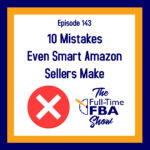

Leave a Reply